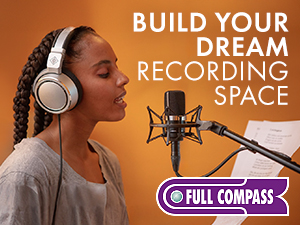|
Warning: A Tense Body Creates
A Tense Voice - How To Relax
 By Ann S. Utterback, Ph.D. By Ann S. Utterback, Ph.D. Voice Specialist
A tense body can affect your voice in many negative ways.
And as a voice over artist, you canít afford for that to happen.
There are two areas of the head that harbor lots of tension: the forehead and the neck.
Tension in the forehead is a sign that thereís tension cascading down from there into the jaw and neck.
Two places you donít want it to be.
START WITH JAW
Wrinkle up your forehead right now and observe how the rest of your head feels.
Most likely, you will find that your jaw is tenser.
If your jaw is tense, itís going to affect your resonance (the richness and fullness of your voice), as well as your articulation.
NOW YOUR NECK
When the tension hits the neck, it has the potential to make our pitch rise. Not what you want happening every time youíre in front of a microphone.
The vocal folds (cords) are tiny folds of muscle and ligament in our throats (to watch them at work click here).
Adding or reducing tension in the vocal fold area creates our vocal pitch. The greater the tension, the higher the pitch.
I often tell my clients who are television reporters or anchors to watch their work and look at the tendons in their neck.
If those tendons look like steel cables, they can be assured that their pitch is elevated.
ROLL YOUR SHOULDERS
So what can you do to avoid facial and neck tension?
For starters, try these simple shoulder rolls:
This simple exercise done a few times a day will eliminate tension from your upper body.
STAND AND STRETCH
Here are five stretches that can be done separately or as a sequence.
You can perform the entire series in less than five minutes. But you can also pick out a single stretch and do that alone.
Do all these stretches in a standing position, with your knees slightly flexed and your feet spread about as wide as your shoulders.
Keep your chin parallel to the floor during each stretch.
If you have any pain, do not do the stretching, and check with your doctor.
1. Begin with your hands at your sides.
2. Bring your arms straight out in front of you and interlace your fingers.
3. Bring your hands behind your back, with your arms straight down toward the floor.
4. Pretend you are swimming using the breaststroke.
5. Finish by rounding your arms in front of you, as if youíre hugging a large beach ball.
Do these stretches before going to the mic. Youíll feel more relaxed and your voice will sound better!
ABOUT ANN ...
Ann S. Utterback, Ph.D., is a voice specialist with more than 40 years experience and has helped hundreds of people make the most of their voices, working with broadcasters, voice over artists and podcasters around the world. An author of eight books and over 50 articles on voice, her Broadcast Voice Handbook is used in newsrooms and classrooms throughout the U.S. It is designed as a self-help book that teaches how to improve every aspect of your voice. Her website offers more information, including a link to her informative blog and a free mp3 to begin your voice improvement.
|
As of the NEW website launch, 03/22/2012







.png)


Thanks for posting this.
Last time I taught with it was at the University of Texas at Arlington Radio TV Dept. I created quite a few students who went on to be professionals, including not only those in the U.S., but several now on Telemundo in South America and Mexico. One is now on the national Fox news network and another is on MSNBC. This is my 34th year as a voice talent and teacher and let's hear more from you Dr. Utterback. We all can learn from you.
Bettye
http://www.voicesvoices.com
BP